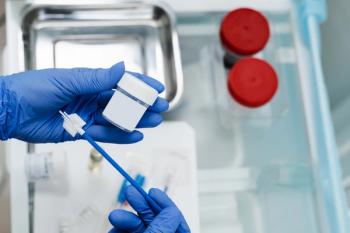
COVID-19 Testing Capacity Reduces Costly Preventative Interventions
Mathematical model from Penn State shows an alternative to business shutdowns and stay-at-home orders that are unsustainable over time.
COVID-19 testing capacity could reduce reliance on costly preventative interventions, such as distancing and shutdowns, results of a mathematical model by Penn State shows.
“The global spread of SARS-CoV-2 and the strategies used to manage it have come at significant societal costs; for example, shutdowns of non-essential businesses and stay-at-home orders are powerful tools to control the pandemic spread of the virus, but are unsustainable over time,” Katriona Shea, professor in biological sciences at Penn State University, said in a statement.
“Understanding the efficacy of combined public health interventions is a key first step in identifying cost-effective ways to manage the pandemic, especially in areas where there is low vaccine uptake and as we continue to see new, and potentially more dangerous, variants of the virus emerge.”
The study results show that high test administration, more intense non-pharmaceutical interventions (NPIs), and short testing delays all decrease SARS-CoV-2 infection.
The results also show that when testing delays are long, an additional 5% of the population each day yields, at most, a 1.5% decrease in the minimally sufficient NPI intensity required to achieve the same level of pandemic control.
When tests are rapid, a 5% increase in test administration yields a 12.6% decrease in NPI intensity.
“The lowest NPI levels are possible only when many tests are administered and test delays are short. Reducing reliance on NPIs is highly dependent on the ability of a testing program to identify and isolate unreported, asymptomatic infections,” Emily Howerton, a graduate student in biology at Penn State University, said in the statement.
Investigators designed the model to support government and public health officials in implementing testing and isolation programs to stop the spread of SARS-CoV-2 and reduce the costly interventions.
The model measured the public health outcomes in a variety of scenarios, including testing isolation, and NPIs, such as distancing, masking, and lockdowns.
The test system comprises 3 parts: test administration, test delays, and test sensitivity.
Investigators modeled the number of tests that were administered each day, defining testing delays as the average time to receive tests results after the test was administered and test sensitivity as the percent of actively infected individuals correctly identified.
They also used “NPI intensity” to model the decrease of transmitting by a certain amount.
The results were published in PLOS Computational Biology.
Reference
More strategic COVID-19 testing could prevent distancing and shutdowns. EurekAlert. News release. October 28, 2021. Accessed November 1, 2021.
Newsletter
Stay informed on drug updates, treatment guidelines, and pharmacy practice trends—subscribe to Pharmacy Times for weekly clinical insights.






















































































































































































































